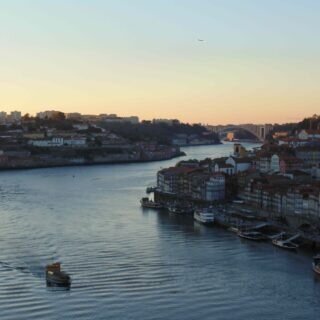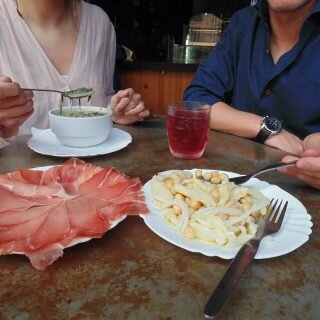If you’ve so much as glanced at Portugal, you will no doubt have noticed that our country is filled to the brim with tiles. This manner of tilework, isn’t really unique to Portugal, and has a long history of cultural twists and turns until they took the form we see today. Porto is of course no exception to this trend of tiles or azulejos, as we call them, and their presence is well felt in the city, with some of the best tiles in the country.

Tiles were at first an Arabic effort to imitate Byzantine mosaics. From there, the trend spread into Italy and the Iberian peninsula, but it was the Italians who came to the peninsula, propagating their tin glazed technique, popular in both Portugal and Spain during the Late Middle ages and the Renaissance. Until then they varied in colour and were mainly consisting of repeating patterns. It was only in the late Renaissance that the Delft style tiles with their chinaware-inspired blue and white started supplanting the Moorish tiles. As the taste for them grew, Portuguese masters started producing their own tiles, heralding in the 18th century the golden age of tiles. They were used for both insulation and decoration, and for all manner of buildings, decorating the interior and exterior of churches, palaces, and houses, with massive amounts of repeating pattern tiles being exported to Brazil, and becoming a little more functionalist after the Lisbon Earthquake. In the 19th century, things were a little tougher with the Napoleonic invasions, but later on the industrial revolution brought new life to this art: the tile became ubiquitous, covering rows of apartments, adding on even more to the ones already present. Art déco and art nouveau also influenced the way the tile was presented then in the 21st century, although the old mastery was never lost.

In Porto, there are a number of phenomenal tiles that can be found throughout the city. The one that stands out the most is no doubt the São Bento central train station; the tiles inside are not only numerous and covering an immense wall area, as they are great art, and depict various scenes of Portuguese history and daily life (of the time), as well as depicting the evolution of transportation. Not too far out from there is the Capela das Almas (Chapel of the Souls) next to the Bolhão metro station, a chapel almost entirely covered in said tiles. Other fine examples of the tilework in Porto can be found in Rua Formosa at the Pérola do Bolhão grocery shop (in art nouveau style), on the side of the Carmo church, near the Clérigos Tower, the porch on the Northern façade of the Sé (Porto Cathedral), or if you’re feeling like looking at a more arabesque style, the Devesas Factory Warehouse (José Falcão Street) built in 1901 is a fine example of this, standing out among the other contenders, despite being a little hidden away.

All in all, the tile was immensely impactful in the aesthetic of Portugal, and from North to South it can be found in many nooks and crannies all the same as it can be seen in the grand regal and holy monuments, bringing the colour of sky and sea Portugal was built upon to its very streets, adorning with tales grand heroism and honour the granitic countenance of the capital of north, the city of Porto.
If you want to spot the best examples of tiles in the city, the Porto Downtown Tour is perfect for you! Reach out to us and book one! You wan´t be disappointed!



